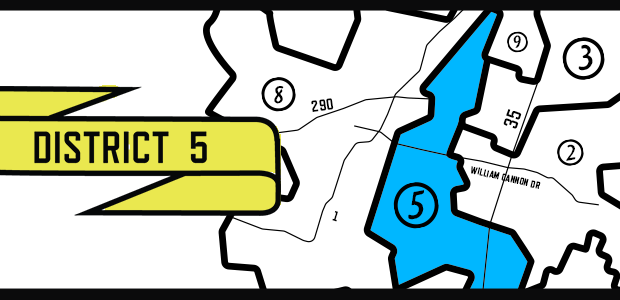Kitchen says Council meeting reform is top priority
Tuesday, January 6, 2015 by
Tyler Whitson Though District 5 City Council Member-elect Ann Kitchen ranks affordability, transportation and growth management as her top citywide issues this year, she believes that the new Council should start by streamlining its legislative process.
“My first priority is to change how we work with the public,” Kitchen told the Austin Monitor. “I think we immediately need to address the structure of the Council meetings and committees so that we can be more responsive to the public and make it easier for the public to engage with the Council.”
Kitchen said Council can begin by setting specific start times for public hearings to take place during meetings and setting end times for those meetings as well, so that they don’t run late into the evening or early morning. “Starting with those two types of things will be huge progress,” she said.
As far as affordability, Kitchen said that Austin is “fast becoming a place where people cannot afford to live” and that Council should take a more comprehensive approach to addressing the issue.
“We’ve traditionally looked at taxes and affordable housing, for example,” she said. “We need to continue with that, but also broaden our scope so that we also understand the costs of transportation, technology, utilities, health care, food and all of those things.”
Kitchen said she supports implementing a 20 percent homestead tax exemption, which was a major issue on the campaign trail and will likely be a major point of discussion for Council this year. “I support implementing it in a way that does not require us to cut essential services for lower-income folks, and I think that we can do that,” she said.
In order to do this, Kitchen said, Council should consider phasing in the exemption over time, cutting other tax incentives that the city may provide and examining the balance between commercial and residential tax burdens. She added that she views the homestead exemption as just “one tool in a toolbox” for addressing affordability needs.
Kitchen said that Council should look primarily at utility rates as an approach for reducing housing costs for renters. “We have to examine our revenue models for both water and energy, because they have an impact on our utility rates,” she said.
According to a recent study, more than half of Austin residents are renters.
Kitchen said that Council should take a proactive approach to addressing transportation issues. “Most immediately, we need to fix some of the infrastructure problems we have for transportation,” she said, citing road, sidewalk, bike lane, bus schedule and bus route improvements as priorities.
“I think we need to most immediately focus on those types of things while we try to figure out how to work toward a transit system for the whole city,” Kitchen said, adding that she believes transit is important to the city’s future.
Kitchen said that growth management is a major issue both citywide and in District 5. “Growth is not a bad thing,” she said. “It’s about how we manage it for the people that live here so that they are not overrun and pushed out.”
Council can partially address growth citywide, Kitchen said, through its role in the CodeNEXT Land Development Code rewrite process and by reforming the Planning and Development Review Department and its processes.
“The current code doesn’t work for the type of growth that we’re having right now and also just for the type of city that we are,” Kitchen said, asserting that the code should allow for more types of housing while respecting and maintaining the character of the city’s neighborhoods.
Kitchen links CodeNEXT with the Planning and Development Review process, which she asserts is broken. “It’s expensive for small businesses, it’s expensive for individuals and homeowners, it’s a hard process for the staff — we just need to make changes,” she said, adding that Council will be considering reforms “very soon.”
Kitchen said that flooding is one of the unique challenges District 5 faces, citing the Halloween 2013 flood in the Onion Creek area and flooding in the Williamson Creek area as examples. “The city has made some progress in terms of emergency response,” she said, “but now we need to make progress in terms of preventing the next flood.”
Kitchen added that the South Lamar neighborhood has experienced flooding because of “rapid growth” that outpaced stormwater infrastructure, which is an issue that Council will need to address.
District 5 begins south of Lady Bird Lake between Barton Creek and the Union Pacific Railroad line and runs as far south as the Travis County line. It includes the South Lamar Boulevard corridor and the Zilker, Barton Hills and Westgate neighborhoods.
Kitchen said that the entire district is growing, whether it is through new developments south of Slaughter Lane or increasing density closer to Lady Bird Lake. She stressed the need to control and keep up with that growth and ensure that residents have essential services and infrastructure such as parks, libraries, transportation and sidewalks near where they live.
“I see that we have both a critical opportunity and a challenge — and I want to emphasize the opportunities — to manage how we grow so that we really can protect and improve our neighborhoods,” Kitchen concluded.
You're a community leader
And we’re honored you look to us for serious, in-depth news. You know a strong community needs local and dedicated watchdog reporting. We’re here for you and that won’t change. Now will you take the powerful next step and support our nonprofit news organization?







